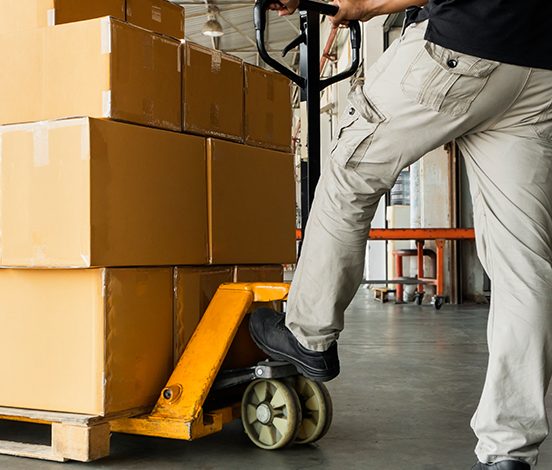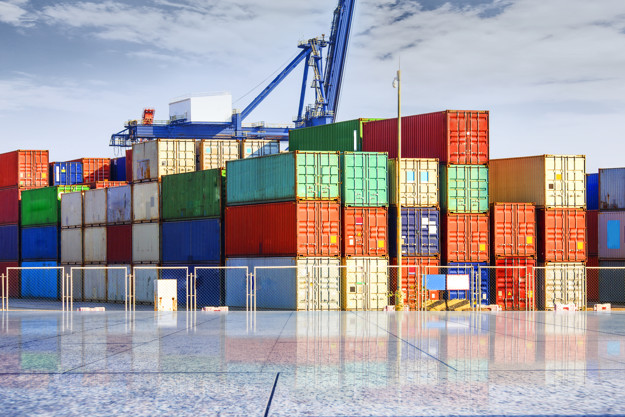In order to guarantee the optimal delivery of your expedition, you must have adequate and high-security packaging. First, check the quality of the material.
Should you choose double or triple channel boxes? Ask the right questions:
To which country is the merchandise destined? What kind of products do I ship?
What means of transport is used?
Land, rail, air, sea?
Choose a resistant cardboard, adapted to the climatic conditions of all the countries through which it passes before reaching the final destination and capable of supporting a palletized shipment. Also, you should secure your products inside the boxes so that they move as little as possible during shipping. To do so, you can use 2 types of padding: Padding that prevents movement and those that protect (bubble film, for example).
Export your merchandise: Use optimal packaging to guarantee its safety
How to protect merchandise from weather conditions and theft?
Your packages may be at risk during export for two different reasons: Weather conditions or theft. To export the merchandise and protect it from bad weather, consider using: A moisture absorber: Desiccant bags are easy to use and very effective, they are placed inside the boxes and prevent the formation of water. A temperature indicator: Depending on whether the merchandise is going to hot or cold countries, a temperature indicator (ascending or descending) ensures shipments by warning if the shipment has been exposed to temperatures that are detrimental to your products. Colored stretch film: Protects the pallet from UV rays. To secure the package and prevent theft, you can use: Security adhesive tape: There are adhesive tapes that mark when a package has been tried to be opened, this can also be achieved with personalized adhesive tape with your brand, since it is irreplaceable. Rubberized band: It is manufactured in such a way that any attempt to detach the band causes the box to break and reveals its opening. Plastic seal with toothed strip: It has an individual marking that makes your merchandise unique. Light packages up to 25 kg Packages up to 35 kg Heavy packages from 35 kg or bulky Which tape to choose? Choose a 28 micron PVC or polypropylene tape, adhesive paper or gummed band Choose a 32 micron PVC or polypropylene tape or gummed band Choose a minimum 40 micron PVC or polypropylene tape, reinforced tape or reinforced rubber band How to use the tape? Make a simple closure with 2 bands Make a reinforced closure with 6 bands Make the closure with 70 or 75 mm wide adhesive tape and a complete closure with 6 bands. Example photograph Closing the box with adhesive tape – U closure U closure Closing the box with adhesive tape – L + U closure L+U closure Closing the box with adhesive tape – H closure H closure – The Packing Book Which is the best packaging to transport pallets? There are 2 cases: Your company sends individual packages and does not build its own pallets: You must ensure that the transport company perfectly integrates your package on the pallet. To do this, choose palletizable boxes (of standardized dimensions) and check their quality to avoid crushing. Your company builds its own pallets to make a mass shipment: You must guarantee the safety and quality of the pallet as we explain below: 1. Choose the pallet well Today, the most used type of pallet in Europe is the Europallet, with dimensions standardized 800 mm wide by 1200 mm long. The size must be adapted with the mode of transportation: Land, rail, air or sea. The material of the pallet allows you to control the shipping costs for it. Fiber pallets are lighter and therefore easier to handle and cost less to ship. They are exempt from export processing, unlike the wooden pallet, which is heavier and requires an ISPM 15 certificate of compliance for export. 2. Choose between a container box or palletizing Container boxes have a huge advantage, they can be transported by land, rail, air or sea. They admit up to a ton of cargo and comply with the ISPM 15 international standard, which aims to reduce the spread of pests from one continent to another (this standard eliminates the need for fumigation or heat treatment in wood). 3. Build your pallet If you want to load different box formats on the same pallet, we recommend starting with the smallest ones, so that they are located below the pallet rack, and ending with the largest ones, so that they are on top. Stretch film, shrink film or strapping allow the pallet and its load to be secured. The corners protect the corners of the pallets and the products from bumps and scratches during transport, loading and storage. They also prevent marks caused by the strapping in the event that it has been strapped with strong tension. 4. Secure the shipment of the pallet Thanks to the palletizing accessories: A cover to protect from bad weather and dirt. An opaque film to guarantee the confidentiality of the expedition. An anti-stacking cone to signal that another pallet should not be stacked. Cargo labeling When exporting, if you label your merchandise correctly, in case of damage and/or deterioration during transport, it can be reimbursed by the company. But if there are no labels or they are incorrect, the issuing company may be responsible. So make sure you place the appropriate label on your pallets or packages, depending on the products. And do not forget the identification card of your package (name, quantity, product, etc.) Label your merchandise, it is a very important factor in exporting Find out about the regulations for the export of products That your merchandise is retained in customs or refused for regulatory reasons would be a shame, so you should know how to avoid it. The European Union, for example, has specific labeling rules for certain products such as food, alcohol, textiles, etc. Customs formalities (outside the EU) must also be taken into account: find out about the country of export to avoid unpleasant surprises or ask your carrier. International transport companies are well informed of customs procedures and can even clear your merchandise from customs. By following these tips, you will optimize your costs and guarantee a shipment without damage. The 3 key points to remember: Choose your packaging well: Double or triple cardboard channel, easy to handle by the carrier. Think about sending it by pallet or choose a suitable format. Do not forget the pallet racking accessories, such as the anti-blow cone, to guarantee the integrity of the pallet. Take care of the labeling of the packages or pallets and find out about the regulations in the countries of destination.




